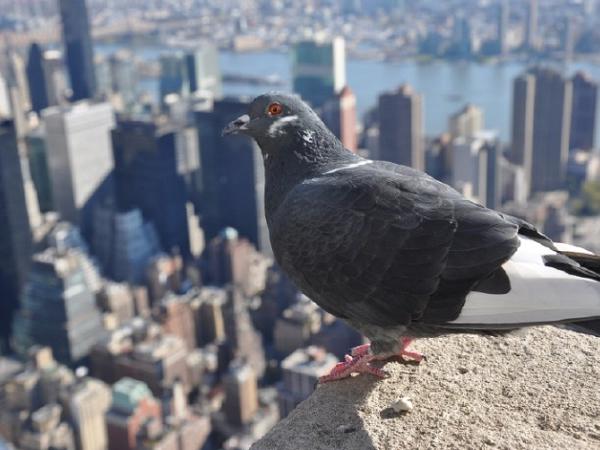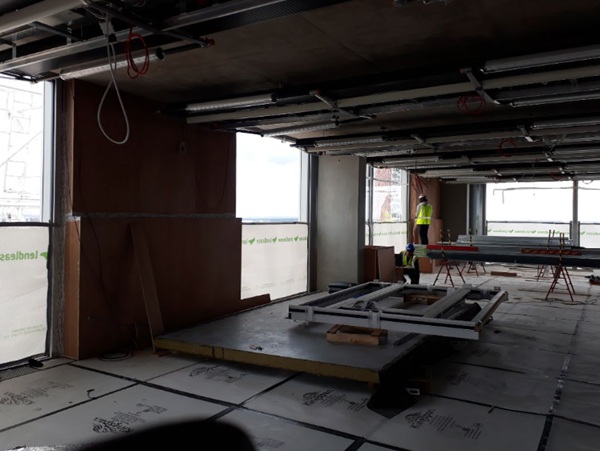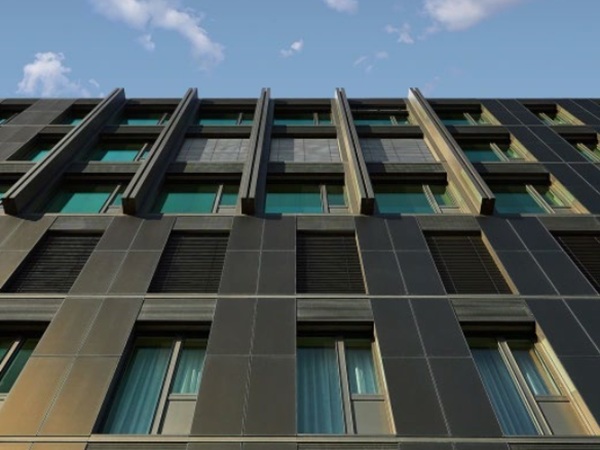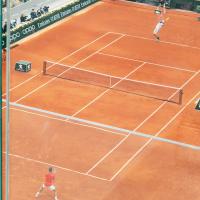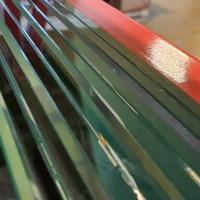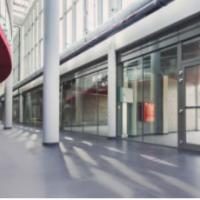While most people have seen or heard a bird hit a window, they often believe it to have been an unusual event. However, the occurrence is more common than people might think. The ABC is the first organization to take a national approach to solving the glass collision problem. ABC educates and informs architects, planners, and developers about the issue and solutions; advocates for legislation to require use of bird-friendly materials; and develops and evaluates new materials and products.
ABC’s “Bird-friendly Building Design” guide, built on the pioneering work of New York City Audubon, adds a review of the science behind available bird-friendly solutions and provides many visual examples of how those solutions can be applied to new construction and existing buildings.
Read more:
Bird-friendly Building Design: https://abcbirds.org/program/glass-collisions/bird-friendly-design/
Truths About Birds and Glass Collisions: https://abcbirds.org/blog/truth-about-birds-and-glass-collisions
FACTORS AFFECTING COLLISIONS
Birds cannot grasp the concept of glass – its transparency, reflectiveness, or the cues humans see to acknowledge glass by context, such as mullions or frames – and therefore fly into the deadly surfaces.
Every site and building combine for a unique set of risk factors. Risk factors related to geography, ecology, and migratory patterns may be difficult to adjust. However, many problems can be mitigated through building design. According to ABC, glass causes virtually all bird collisions with buildings. Studies based on monitoring data have shown a direct relationship between the amount of glass on a building and the number of collisions at that site. Mirrored glass proves especially deadly.
Bird-friendly design strategies fall into three general categories, any or all of which could be combined on a single project. While ABC recommends minimal glass as one option, AGI encourages the second two strategies:
- Use minimal glass
- Place glass behind some type of screening (e.g. netting, screens, grilles, shutters, exterior shades)
- Use glass with inherent collision-reduction properties (e.g. patterns, frits, films, opaque and translucent glass)

BIRD-SAFE GLASS
Building codes, standards and green certification programs increasingly call for bird friendly design (and bird glass).
According to the National Audubon Society, “bird-safe glass is specially designed to make glass a visible obstacle to birds.” Audubon cites approaches such as fritting, silk-screening, or ultraviolet (UV) coating to create patterns that break up the reflectivity of glass.
“More important than the technique used to create the pattern is its spacing. Testing has shown that the ‘2 x 4 rule’ is most effective – meaning that the silk, coating, or markings are added across the pane, spaced two inches apart horizontally and four inches apart vertically. Research has shown that birds will not fly through spaces less than two inches high or four inches wide.”
An illustration of the 2 x 4 Rule (courtesy of ABC) is pictured and described above in greater detail.
BIRD-FRIENDLY BUILDINGS
ABC describes a bird-friendly building as one with:
- At least 90% of the material in each exposed facade, including walls around inner courtyards, from ground level to 75 feet (the primary bird collision zone) has a threat score of <30, as defined by the ABC rating system.
- At least 60% of material in the exposed facade above the collision zone meets the above standard.
- There are no “see through” passageways or corners (i.e. where two areas of untreated glass meet in a corner) in collision zones from ground level to 75 feet.
- Building lighting meets International Dark Sky Association standards (learn more at https://www.darksky.org).
- Building monitoring for collisions occurs on a regular basis and areas causing collisions are remediated.
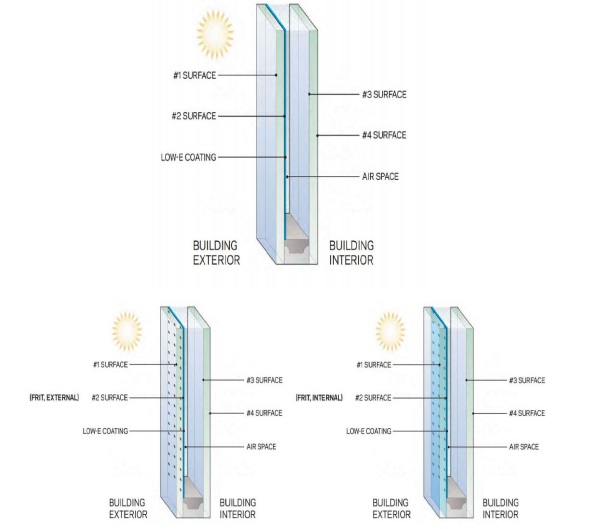
NGA RESPONSE
In February 2020, The National Glass Association (NGA) announced publication of Bird-Friendly Glass Design Strategies, one of six new Glass Technical Papers (GTPs) written to reflect the latest industry developments and trends.
The GTP addresses the background of bird-friendly building design and provides key definitions and surface orientations specific to the application. Visual markers, reflections, and the impact of light are discussed, as well as the latest legislative and regulatory developments with respect to material use, local ordinances, and zoning requirements.
USGBC PILOT CREDIT
The U.S. Green Building Council (USGBC) has also addressed bird safety by adding a Pilot Credit, Reducing Bird Mortality, to the LEED rating system. “Until recently, this problem has been almost unrecognized as an issue of sustainability,” explains the USGBC. “Moving into the future, it will be increasingly necessary to design structures with impact on birds in mind.”
The Pilot Credit 55 aims to “reduce bird injury and mortality from in-flight collisions with buildings,” by requiring compliance with building facade and site structural design parameters, exterior lighting guidelines, and a performance monitoring plan.
USGBC RESOURCES
USGBC offers educational programming, case studies, slides, and a calculator to illustrate bird hazards in the built environment, identify available strategies for reducing bird mortality, and show how bird-safe design can contribute to heat and light controls and security.
Taking Flight: Bird-Safe Buildings Policy Continues to Proliferate
https://www.usgbc.org/resources/taking-flight-birdsafebuildings-policy-continues-proliferate
Bird Collision Threat Rating Calculation Spreadsheet
https://www.usgbc.org/resources/bird-collision-threat-ratingcalculation-spreadsheet
AUDUBON ACTIONS
New York City Audubon and Portland Audubon have strong programs related to bird safety. Learn more about their actions on their respective websites:
New York City Audubon: http://nycaudubon.org
Portland Audubon: https://audubonportland.org
ABOUT ABC
The American Bird Conservancy is the Western Hemisphere’s bird conservation specialist – the only organization with a single and steadfast commitment to achieving conservation results for native birds and their habitats throughout the Americas. With a focus on efficiency and working in partnership, the American Bird Conservancy takes on the toughest problems facing birds today, innovating and building on sound science to halt extinctions, protect habitats, eliminate threats, and build capacity for bird conservation.

4249 Loudoun Avenue, PO Box 249
The Plains, VA 20198
540-253-5780
Abcbirds.org
Special thanks to Christine Sheppard, Ph.D., Director of the American Bird Conservancy Glass Collisions Program for information contained in this Devil’s Detail.

About the Devil’s Details
The AGI educational series illustrates and describes common glazing challenges as a means to communicate best practices for the design and construction industry, not as a sole source for design guidance. AGI recommends design professionals consult with an AGI contractor regarding specific project challenges. AGI contractor profiles may be accessed at www.theagi.org. To share a devilish detail of your own, contact Stephanie Staub at stephanie@theagi.org.

